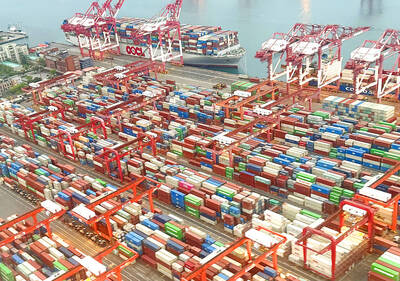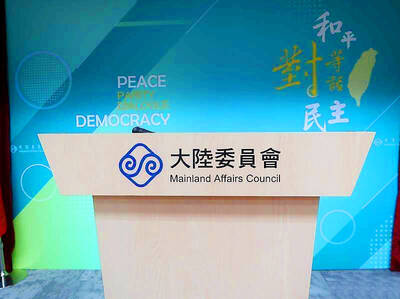Senior staff members of the UN nuclear agency have concluded in a confidential analysis that Iran has acquired “sufficient information to be able to design and produce a workable” atom bomb.
The report by experts in the International Atomic Energy Agency (IAEA) stresses in its introduction that its conclusions are tentative and subject to further confirmation of the evidence, which it says came from intelligence agencies and its own investigations.
But the report’s conclusions, described by senior European officials, go well beyond the public positions taken by several governments, including the US.
Two years ago, US intelligence agencies published a detailed report concluding that Tehran halted its efforts to design a nuclear weapon in 2003. But in recent months, Britain has joined France, Germany and Israel in disputing that conclusion, saying the work has been resumed.
A senior US official said last week that Washington was re-evaluating its 2007 conclusions.
MAKING COMPONENTS
The atomic agency’s report also presents evidence that beyond improving upon bomb-making information gathered from rogue nuclear experts around the world, Iran has done extensive research and testing on how to fashion the components of a weapon. It does not say how far that work has progressed.
The report, titled Possible Military Dimensions of Iran’s Nuclear Program, was produced in consultation with a range of nuclear weapons experts inside and outside the agency. It draws a picture of a complex program, run by the Iranian Ministry of Defense, “aimed at the development of a nuclear payload to be delivered using the Shahab 3 missile system,” Iran’s medium-range missile, which can strike the Middle East and parts of Europe.
The program, the report said, apparently began in early 2002.
If Iran is designing a warhead, that would represent only part of the complex process of making nuclear arms. Engineering studies would have to turn ideas into hardware. Finally, the hardest part would be enriching the uranium that could be used as nuclear fuel — though experts say Iran has already mastered that task.
GO PUBLIC?
While the analysis represents the judgment of the nuclear agency’s senior stAaff, a struggle has erupted in recent months over whether to make it public. The dispute pits departing IAEA Director Mohamed ElBaradei against his own staff and against foreign governments eager to intensify pressure on Iran.
ElBaradei has long been reluctant to adopt a confrontational strategy with Iran, an approach he considers counterproductive. Responding to calls for the report’s release, he has raised doubts about its completeness and reliability.
Last month, the agency issued an unusual statement cautioning it “has no concrete proof” that Iran ever sought to make nuclear arms, much less to perfect a warhead. On Saturday in India, ElBaradei was quoted as saying that “a major question” about the authenticity of the evidence kept his agency from “making any judgment at all” on whether Iran had ever sought to design a nuclear warhead.
Even so, the emerging sense in the intelligence world that Iran has solved the major nuclear design problems poses a new diplomatic challenge for US President Barack Obama and his allies as they confront Iran.
US officials say that in the direct negotiations with Iran that began last week, it will be vital to get the country to open all of its suspected sites to international inspectors. That is a long list, topped by the underground nuclear enrichment center under construction near Qum, that was revealed 10 days ago.
Iran has acknowledged that the underground facility is intended as a nuclear enrichment center, but says the fuel it makes will be used solely to produce nuclear power and medical isotopes. It was kept heavily protected, Iranian officials said, to ward off potential attacks.
Iran said last week that it would allow inspectors to visit the site this month. In the past three years, amid mounting evidence of a possible military dimension to its nuclear program, Iran has denied the agency wide access to installations, documents and personnel.
In recent weeks, there have been leaks about the internal report, perhaps intended to press ElBaradei into releasing it.
The report’s existence has been rumored for months and The Associated Press, saying it had seen a copy, reported fragments of it last month. On Friday, more detailed excerpts appeared on the Web site of the Institute for Science and International Security, run by David Albright, a nuclear expert.
In recent interviews, a senior European official familiar with the contents of the full report described it to the New York Times. He confirmed that Albright’s excerpts were authentic. The excerpts were drawn from a 67-page version of the report written earlier this year and since revised and lengthened, the official said; its main conclusions remain unchanged.
“This is a running summary of where we are,” the official said.
“But there is some loose language,” he said and it was “not ready for publication as an official document.”
Most dramatically, the report says the agency “assesses that Iran has sufficient information to be able to design and produce a workable implosion nuclear device” based on highly enriched uranium.
Weapons based on the principle of implosion are considered advanced models compared with the simple gun-type bomb that the US dropped on Hiroshima. They use a blast wave from a sphere of conventional explosives to compress a ball of bomb fuel into a supercritical mass, starting the atomic chain reaction and progressing to the fiery blast. Implosion designs, compact by nature, are considered necessary for making nuclear warheads small and powerful enough to fit atop a missile.
The excerpts of the analysis also suggest the Iranians have done a wide array of research and testing to perfect nuclear arms, like making high-voltage detonators, firing test explosives and designing warheads.
The evidence underlying these conclusions is not new: Some of it was reported in a confidential presentation to many nations in early last year by the agency’s chief inspector, Ollie Heinonen.

MORE VISITORS: The Tourism Administration said that it is seeing positive prospects in its efforts to expand the tourism market in North America and Europe Taiwan has been ranked as the cheapest place in the world to travel to this year, based on a list recommended by NerdWallet. The San Francisco-based personal finance company said that Taiwan topped the list of 16 nations it chose for budget travelers because US tourists do not need visas and travelers can easily have a good meal for less than US$10. A bus ride in Taipei costs just under US$0.50, while subway rides start at US$0.60, the firm said, adding that public transportation in Taiwan is easy to navigate. The firm also called Taiwan a “food lover’s paradise,” citing inexpensive breakfast stalls

TRADE: A mandatory declaration of origin for manufactured goods bound for the US is to take effect on May 7 to block China from exploiting Taiwan’s trade channels All products manufactured in Taiwan and exported to the US must include a signed declaration of origin starting on May 7, the Bureau of Foreign Trade announced yesterday. US President Donald Trump on April 2 imposed a 32 percent tariff on imports from Taiwan, but one week later announced a 90-day pause on its implementation. However, a universal 10 percent tariff was immediately applied to most imports from around the world. On April 12, the Trump administration further exempted computers, smartphones and semiconductors from the new tariffs. In response, President William Lai’s (賴清德) administration has introduced a series of countermeasures to support affected

CROSS-STRAIT: The vast majority of Taiwanese support maintaining the ‘status quo,’ while concern is rising about Beijing’s influence operations More than eight out of 10 Taiwanese reject Beijing’s “one country, two systems” framework for cross-strait relations, according to a survey released by the Mainland Affairs Council (MAC) on Thursday. The MAC’s latest quarterly survey found that 84.4 percent of respondents opposed Beijing’s “one country, two systems” formula for handling cross-strait relations — a figure consistent with past polling. Over the past three years, opposition to the framework has remained high, ranging from a low of 83.6 percent in April 2023 to a peak of 89.6 percent in April last year. In the most recent poll, 82.5 percent also rejected China’s

PLUGGING HOLES: The amendments would bring the legislation in line with systems found in other countries such as Japan and the US, Legislator Chen Kuan-ting said Democratic Progressive Party (DPP) Legislator Chen Kuan-ting (陳冠廷) has proposed amending national security legislation amid a spate of espionage cases. Potential gaps in security vetting procedures for personnel with access to sensitive information prompted him to propose the amendments, which would introduce changes to Article 14 of the Classified National Security Information Protection Act (國家機密保護法), Chen said yesterday. The proposal, which aims to enhance interagency vetting procedures and reduce the risk of classified information leaks, would establish a comprehensive security clearance system in Taiwan, he said. The amendment would require character and loyalty checks for civil servants and intelligence personnel prior to